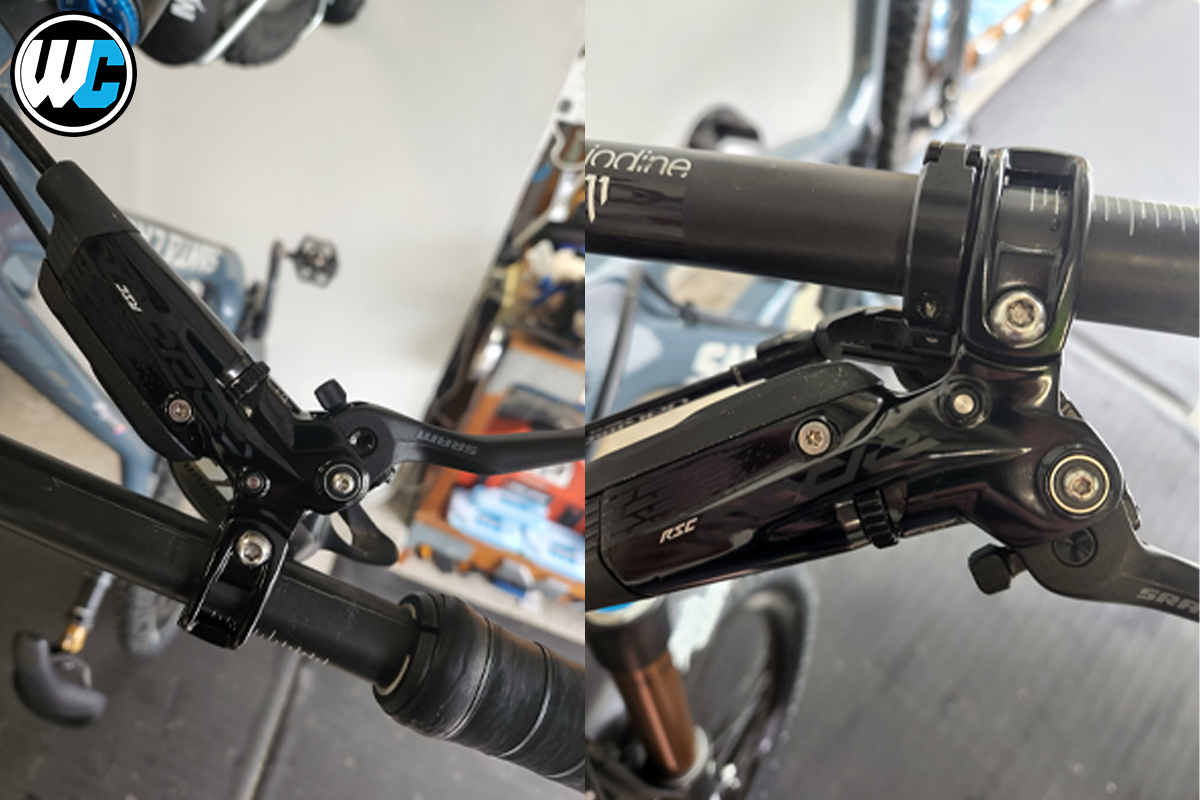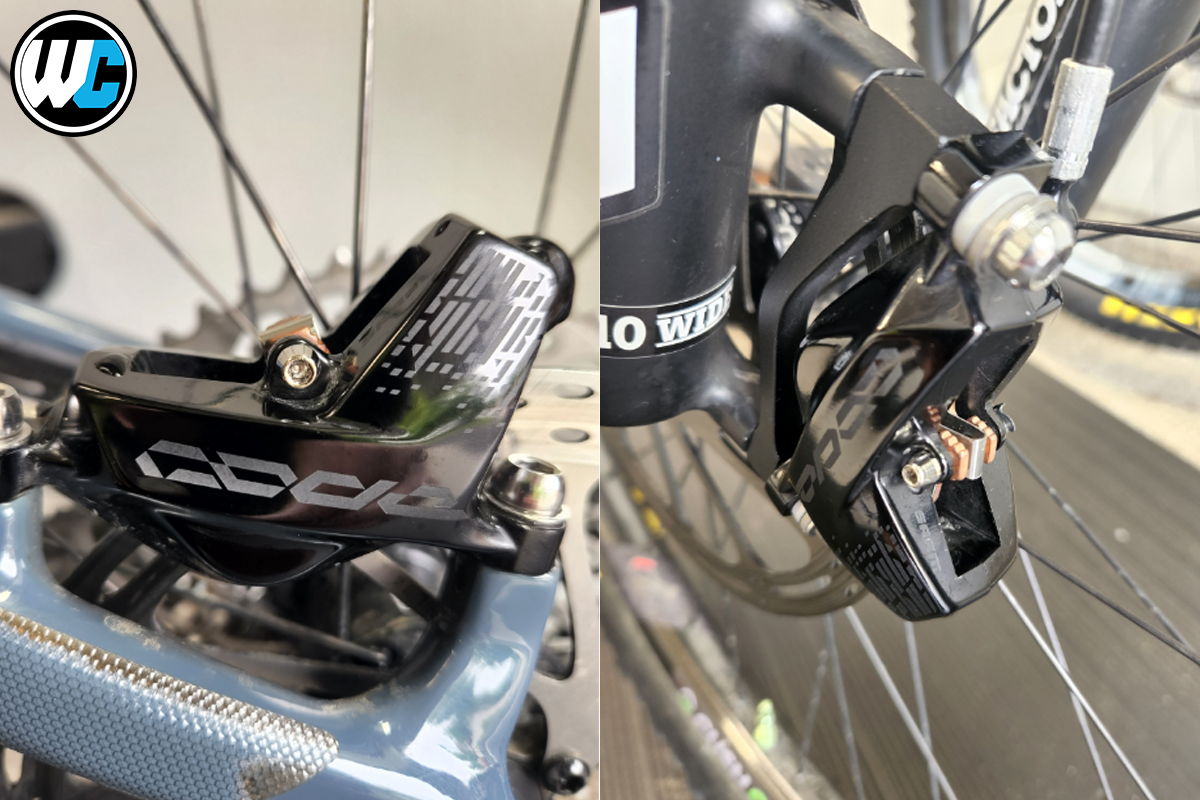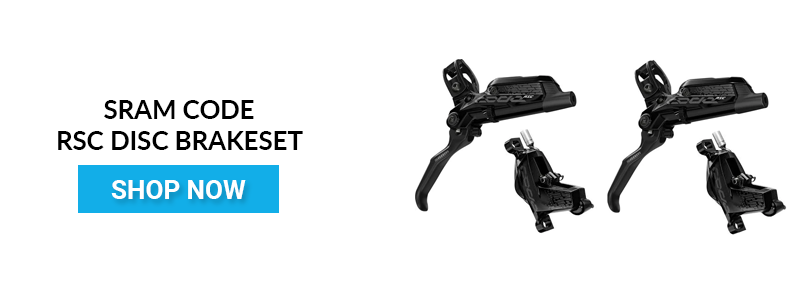- Continue Shopping
- Your Cart is Empty
SRAM Code RSC Hydraulic Disc Brakes [Rider Review]
Our "Rider Review" article series features the honest reviews from verified purchasers of Worldwide Cyclery. They contain the photos, thoughts, feedback & overall review you are looking for.
When talking about brakes in the mountain bike industry, it always comes down to personal preference. One of the brakes that's at the top is SRAM's Code RSC brakes. Our friend, Justin, has been running them for some time. See what they think!
Overview
My previous brakes were Shimano XTR M9120 and I used them for about 2 years in all types of conditions mainly enduro riding, the performance we less than expected. The XTR brakes never felt the same front vs rear. The XTR rear was getting dangerous as it would take a pull almost to the bar to stop. It was time to change my brakes. My Santa Cruz V10 DH bike came standard with RSC Code brakes and they worked well for gravity-oriented trail riding. It would be nice to have all the same brakes on both bikes without 2 bleed kits, different fluids, and different procedures, so the SRAM RSC Codes were an easy choice.
Out-of-the-box installation was easy. Both front and rear cables are plenty long for my XL Santa Cruz Hightower LT. SRAM includes the Stealthajajig hardware kits to shorten the cables with each box, one for the front and rear included. The brakes were pre-bled and did not need bleeding from the factory. When I shortened the hose, bleeding the SRAM is incredibly easy with the SRAM bleed kit (not included) and I was able to test ride in under an hour after starting installation. The pad contact adjust does work, not just a gimmick like on the XTR brakes, and adjusting the pad contact will change the contact point. The SRAM levers feel smoother, although not sure why, but the XTR brakes seemed not smooth. At the end of the brake lever, the curved part at the end is not sharp and more comfortable as compared to the XTR levers which are sharper. The lever adjustment barrel is not as easy to adjust as the XTR's, but just as effective. The lever adjustment knob is kind of small and sharp and the XTR knob is bigger and smoother. SRAM uses a metal type material in the brake pistons which is can be easier to push the pistons back into the caliper with pad changes.
The XTR uses ceramic pistons which can easily crack and break, I know because I broke an XTR piston trying to get it back into the caliper. The carbon levers on the SRAM feel good and are not cold to the touch on winter riding days. Adjustment of the calipers is easier than the XTR brakes because it seems the distance from the pad to the rotor is more with SRAM compared to XTR. Stopping power is good with better brake modulation than the XTR, which can be grippy and sudden. SRAM uses matchmaker components to seamlessly attach the shifter to the brake lever without the need for an additional shifter clamp. I also wish SRAM gave a little more adjustability with the matchmaker shifter attachment as I find my hand touching the shifter lever in a normal riding position. SRAM Centerline rotors are used front and rear of both my bikes. (Hightower 200mm front, 180mm rear, V10 220mm front, and 200mm rear). One thing to think about, these brakes were introduced back in 2017. A new version of RSC Codes is not known as of this review. If you research the best MTB disc brakes on the internet, the SRAM RSC Code regularly ranks in the top 10 and in a few occasions, #1 for DH and enduro riding. SRAM uses DOT 5.1 brake fluid which is expensive and is corrosive to painted surfaces so be careful.
Final Thoughts
Overall, I am pleased with the performance of the SRAM RSC Codes for the types of riding I do. At 220 lbs., these brakes are good enough for the big guys!








